Inventions
The Rolligon

Wikipedia entry.
Posted By: Paul - Fri Sep 14, 2018 -
Comments (2)
Category: Inventions, Motor Vehicles, 1950s
Toe Holder for Sunbathers
Invented by Russell Greathouse of Cuyahoga Falls, Ohio. Patented on Jan 23, 1973.When a sunbather lies on his back his feet are not normally held perpendicular to the ground, but swing outward. As a result, the inner surfaces of the legs are subjected more intensely to the sun’s rays than the outer surfaces. By the use of a toe holder or similar device which holds the big toes adjacent one another a relatively uniform burning effect is obtainable.
The toe holder shown in FIGS. 1, 2 and 3 includes two rings 5 and 6 joined by the web 7. There is a small hole 8 through the web. This hole is not necessary but provides means for decorating the toe holder, and in the drawing the stem 10 of a flower (natural or artificial) is held in the opening 8.

Posted By: Alex - Wed Sep 12, 2018 -
Comments (2)
Category: Inventions, Patents, 1970s
The Advertising Chair
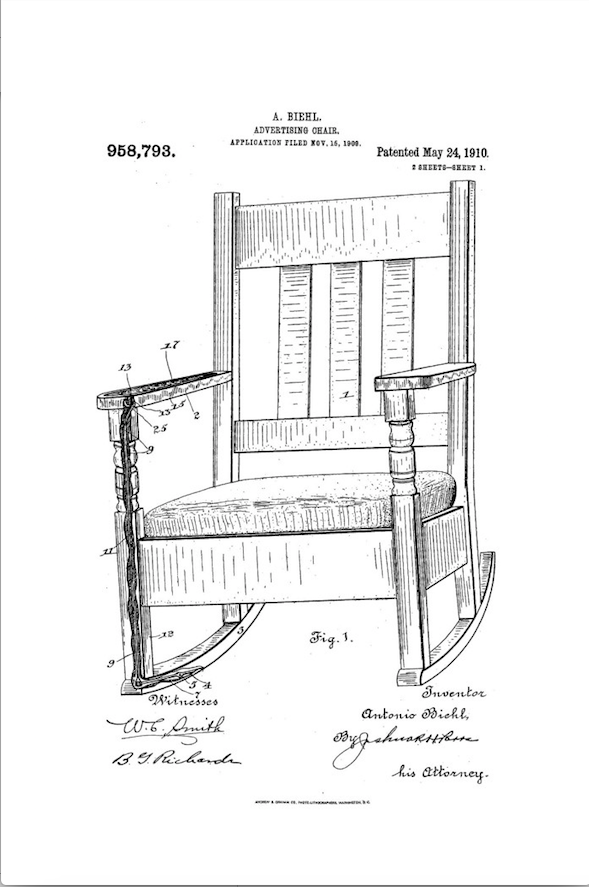
When the chair rocked, visible adverts scrolled in the arms of the chair. So much for our age having a monopoly on intrusive ads.
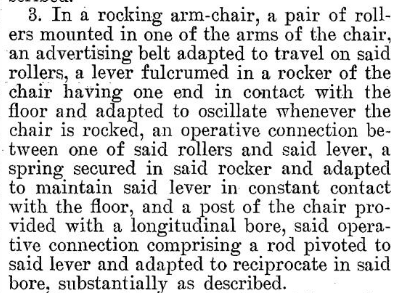
Complete patent here.
Posted By: Paul - Wed Sep 12, 2018 -
Comments (0)
Category: Inventions, Patents, Technology, Advertising, Interior Decorating, 1900s
Inductive Nasal Device
Norman Lake's cure for the common cold. Otherwise known as the "IND".More info: Chicago Tribune - Nov 20, 1985
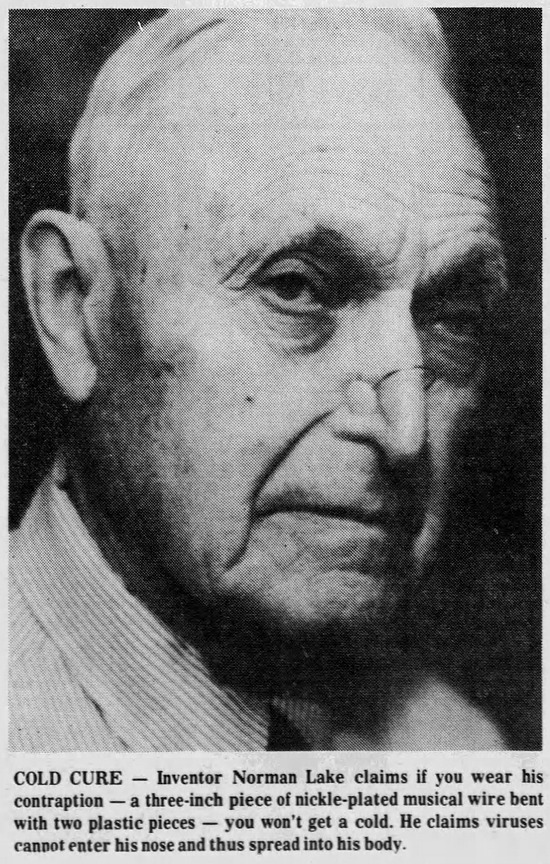
Chambersburg Public Opinion - Apr 23, 1982

Arizona Republic - May 8, 1982
Posted By: Alex - Mon Sep 10, 2018 -
Comments (1)
Category: Health, Inventions, Cures for the common cold, 1980s
Method of Preserving the Dead
Patented Dec 29, 1903 by Joseph Karwowski:In carrying out my process I first surround the corpse 1 with a thick layer 2 of sodium silicate or water-glass. After the corpse has been thus inclosed within the layer of waterglass it is allowed to remain for a short time within a compartment or chamber having a dry heated temperature, which will serve to evaporate the water from this incasing layer, after which molten glass is applied to the desired thickness. This outer lay of glass may be molded into a rectangular form 3, as shown in Fig. 2 of the drawings, or, if preferred, cylindrical or other forms may be substituted for the rectangular block which I have illustrated. In Fig. 3 I have shown the head only of the corpse as incased within the transparent block of glass, it being at once evident that the head alone may be preserved in this manner, if preferred.
It will be at once noted that a body preserved in this way may be kept indefinitely, as the body being hermetically inclosed within the outer glass covering it will be impossible for air to reach it, and hence it will be effectually preserved from decay. The glass surrounding the corpse being transparent, the body will be at all times visible.

Posted By: Alex - Fri Sep 07, 2018 -
Comments (6)
Category: Death, Inventions, Patents, 1900s
Non-melting popsicle
Recently announced by the U.K. design firm Bompas & Parr, who say that it took them a year to develop and that it was "designed with global warming in mind," so thatThe technology is based on pykrete, which is a frozen mixture of sawdust and water that resists melting. Pykrete was invented during WWII, and for a while the British Royal Navy was considering building a supersized aircraft carrier out of the stuff.
The non-melting popsicle uses edible fruit fibers instead of sawdust to achieve the same non-melting effect. A company rep said, "The texture of the ice lolly is not far off a regular lolly, though a tad chewy."
More info: fast company
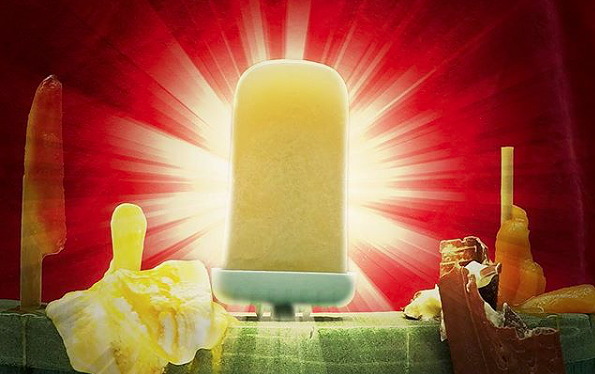
Posted By: Alex - Fri Aug 24, 2018 -
Comments (7)
Category: Food, Candy, Inventions
Life preserver suitcase
Just imagine if everyone on the Titanic had had one of these! (I'm guessing it must have been inspired by that disaster).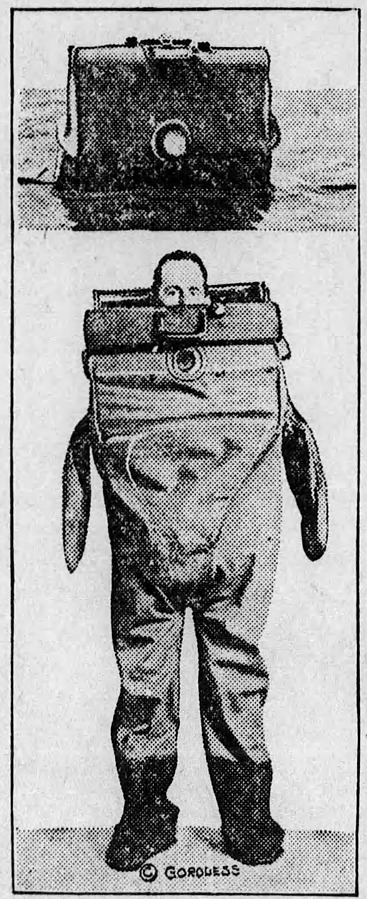
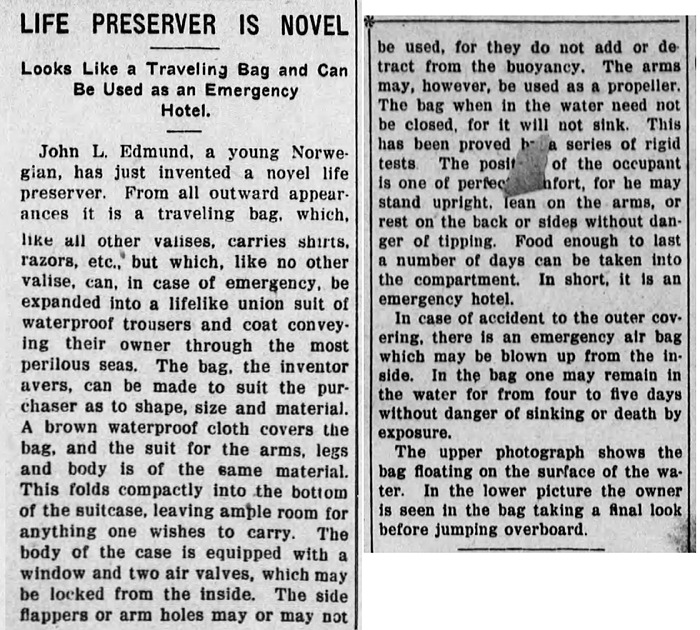
The Kiowa Journal - Oct 7, 1915
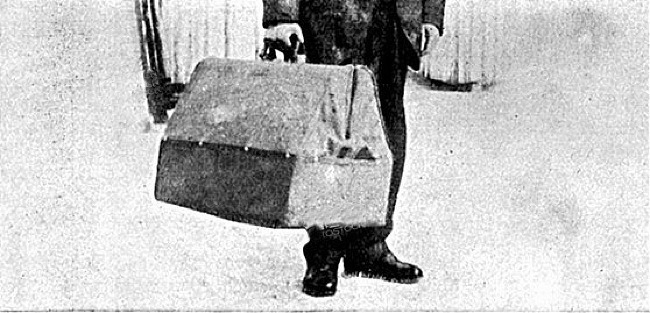
Posted By: Alex - Wed Aug 22, 2018 -
Comments (3)
Category: Boats, Inventions, Travel, 1910s
Motion-Sickness Glasses
They're called SEETROËN glasses. They were designed by the French car company Citroën, which claims that they're the first glasses that eliminate motion sickness. Apparently the blue liquid in the glasses simulates level ground, which helps stop the vertigo feeling that some people get while traveling.Interesting concept, but they look a lot like "crazy straw" glasses.
More info: visuall.net
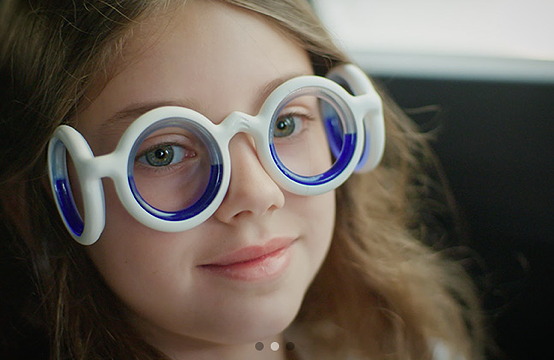
Posted By: Alex - Tue Jul 17, 2018 -
Comments (3)
Category: Fashion, Health, Inventions
New mask for seasickness
Dr. Richmond Goulden of the liner Lady Nelson models the latest in seasickness-prevention technology, 1939.The pipe adds a nice touch.

Baltimore Evening Sun - Jan 4, 1939
Posted By: Alex - Fri Jul 06, 2018 -
Comments (3)
Category: Inventions, Medicine, 1930s
Cremation by solar power
Patent #US4781174A:Seems like something a James Bond villain would create, if he were in the funeral business.


Posted By: Alex - Mon Jul 02, 2018 -
Comments (7)
Category: Death, Inventions, Patents, 1980s

| Who We Are |
|---|
| Alex Boese Alex is the creator and curator of the Museum of Hoaxes. He's also the author of various weird, non-fiction, science-themed books such as Elephants on Acid and Psychedelic Apes. Paul Di Filippo Paul has been paid to put weird ideas into fictional form for over thirty years, in his career as a noted science fiction writer. He has recently begun blogging on many curious topics with three fellow writers at The Inferior 4+1. Contact Us |




